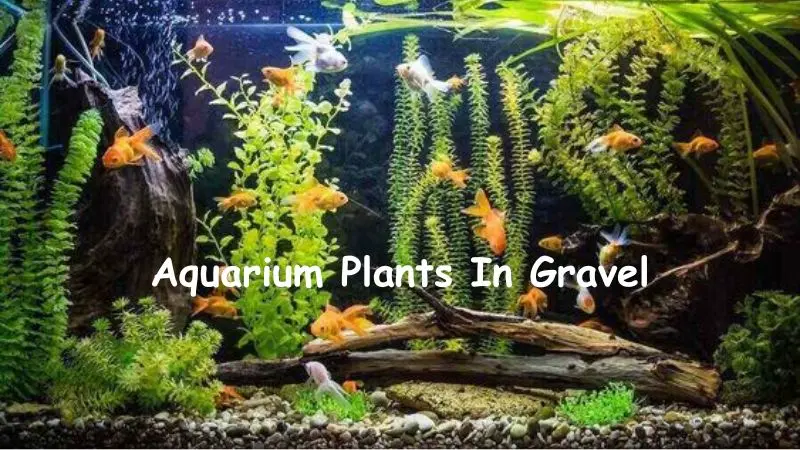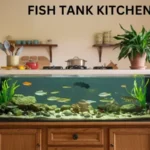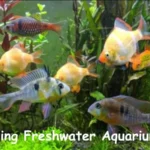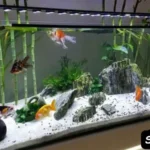marine life blog
Aquarium Plants In Gravel
The underwater world of an aquarium, with its vibrant fish and captivating decorations, is a captivating sight. But a truly thriving ecosystem requires more than just colorful inhabitants. Aquarium plants, particularly when planted in gravel, play a crucial role in creating a healthy and aesthetically pleasing environment for your aquatic companions.
This essay of fishtankmagic.com will delve into the multifaceted benefits of aquarium plants in gravel, exploring their impact on water quality, fish health, and the overall aesthetic appeal of your tank.
The Role of Aquarium Plants in Gravel
Gravel, a common substrate in aquariums, provides a stable base for planting aquatic vegetation. The roots of aquarium plants anchor themselves in the gravel, drawing nutrients and moisture from the substrate. This interaction creates a symbiotic relationship where the plants benefit from the gravel, and the gravel, in turn, is enriched by the plant’s growth and decay.
1. Water Quality Enhancement:
Aquarium plants are nature’s water purifiers. They absorb excess nutrients, such as nitrates and phosphates, which can accumulate in the tank due to fish waste and uneaten food. By consuming these nutrients, plants prevent harmful algal blooms, ensuring crystal-clear water. This natural filtration process reduces the need for frequent water changes, making aquarium maintenance less demanding.
2. Oxygenation and pH Balance:
Aquarium plants, through photosynthesis, release oxygen into the water, creating a more oxygen-rich environment for your fish. This is especially important for species that require high oxygen levels. Additionally, plants help maintain a stable pH balance by absorbing excess carbon dioxide, preventing the water from becoming too acidic.
3. Fish Health and Wellbeing:
A well-planted aquarium provides a natural habitat for fish, offering hiding places, spawning sites, and a sense of security. The presence of plants reduces stress levels in fish, making them more active and vibrant. Some fish species even rely on plants for food, grazing on algae and other plant matter.
4. Aesthetic Appeal:
Aquarium plants are more than just functional elements; they add a touch of natural beauty to your tank. The vibrant colors, diverse shapes, and graceful movements of aquatic plants create a captivating underwater landscape. They can be arranged to create stunning visual effects, enhancing the overall aesthetic appeal of your aquarium.
Choosing the Right Aquarium Plants for Gravel
Not all aquarium plants thrive in gravel. Some species prefer sandy substrates, while others require specific water parameters. Understanding the needs of your chosen plants is crucial for their successful growth.
1. Root Systems and Gravel Type:
Plants with extensive root systems, like Anubias and Java Ferns, prefer a coarse gravel that allows for proper root development. Fine gravel can compact and restrict root growth, leading to stunted plants.
2. Water Parameters:
Different plants have different water parameter preferences. Some thrive in soft, acidic water, while others prefer hard, alkaline water. Research the specific requirements of your chosen plants to ensure they are compatible with your aquarium’s water conditions.
3. Light Requirements:
Aquarium plants need adequate light for photosynthesis. Low-light plants, like Java Moss and Cryptocoryne, can tolerate lower light levels, while high-light plants, like Red Ludwigia and Amazon Swords, require intense lighting for optimal growth.
4. Nutrient Availability:
Gravel can be enriched with nutrients to support plant growth. Adding a layer of fertilizer tablets or liquid fertilizer to the gravel can provide the necessary nutrients for healthy plant development.
Planting Aquarium Plants in Gravel
Planting aquarium plants in gravel is a straightforward process, but it requires some care and attention to detail.
- Prepare the Gravel:
Before planting, thoroughly rinse the gravel to remove any dust or debris. It is advisable to use a gravel vacuum to remove any remaining impurities.
- Create Planting Holes:
Use a planting tool or your fingers to create small holes in the gravel, large enough to accommodate the plant’s root system.
- Place the Plants:
Gently place the plant in the hole, ensuring that the roots are fully covered with gravel. Avoid burying the crown of the plant, as this can lead to root rot.
- Firmly Pack the Gravel:
After placing the plant, gently press down on the surrounding gravel to secure the plant in place. Avoid pressing too hard, as this can damage the roots.
- Water Changes:
After planting, perform a partial water change to remove any excess nutrients or debris released during the planting process.
Maintaining Aquarium Plants in Gravel
Once planted, aquarium plants require regular maintenance to ensure their continued health and growth.
- Trimming:
Regular trimming is essential for maintaining the shape and size of your plants. Trim away any dead or decaying leaves, as well as any plants that are growing too tall or wide.
- Fertilization:
Aquarium plants require regular fertilization to provide them with the necessary nutrients for growth. Fertilize your plants every few weeks, using a liquid or tablet fertilizer specifically designed for aquarium plants.
- Water Changes:
Regular water changes are essential for maintaining water quality and providing plants with fresh nutrients. Perform partial water changes weekly or biweekly, replacing 25-50% of the tank water.
- Algae Control:
Algae can compete with plants for nutrients and light. Regularly clean the tank walls and decorations to prevent algae growth. Consider using an algae scraper or a manual algae remover.
A Deeper Dive into the World of Aquarium Plants in Gravel
The benefits of aquarium plants in gravel extend beyond the points mentioned above. Here are some additional considerations:
- Biofilm Formation:
Gravel, especially when colonized by beneficial bacteria, forms a biofilm that provides a source of food for some aquarium plants. This biofilm, rich in organic matter, contributes to the overall nutrient cycle within the tank.
- Substrate Stability:
Gravel, when properly planted with aquarium vegetation, helps stabilize the substrate. The plant roots bind the gravel together, preventing it from shifting or being disturbed by fish movement. This stability is crucial for maintaining a balanced and healthy aquarium environment.
- Natural Filtration:
Aquarium plants, in conjunction with gravel, act as a natural filter. The roots of plants trap debris and sediment, while the gravel provides a surface area for beneficial bacteria to colonize. This natural filtration process reduces the need for mechanical filtration, making aquarium maintenance more efficient.
- Fish Behavior Modification:
The presence of aquarium plants in gravel can influence the behavior of fish. Plants provide hiding places and spawning sites, encouraging natural behaviors like territoriality and breeding. This can lead to more diverse and engaging fish behavior within the aquarium.
- Disease Prevention:
Aquarium plants, by creating a healthy and balanced ecosystem, can help prevent fish diseases. The presence of plants reduces stress levels in fish, boosts their immune systems, and minimizes the risk of infections.
- Environmental Considerations:
Aquarium plants, unlike artificial decorations, are biodegradable and sustainable. They decompose naturally, enriching the substrate and contributing to the overall health of the aquarium. This environmentally friendly approach aligns with the growing trend towards sustainable aquariums.
In Conclusion:
Aquarium plants in gravel are an integral part of a healthy and aesthetically pleasing aquarium. They enhance water quality, oxygenate the tank, provide fish with a natural habitat, and add a touch of natural beauty to your underwater world.
By understanding the needs of your chosen plants, planting them properly, and providing them with the necessary care, you can create a vibrant and flourishing aquarium that will bring joy for years to come. The journey of maintaining an aquarium with plants in gravel is a rewarding experience, offering a deeper connection to the natural world and a sense of accomplishment as you witness the growth and flourishing of your aquatic ecosystem.












